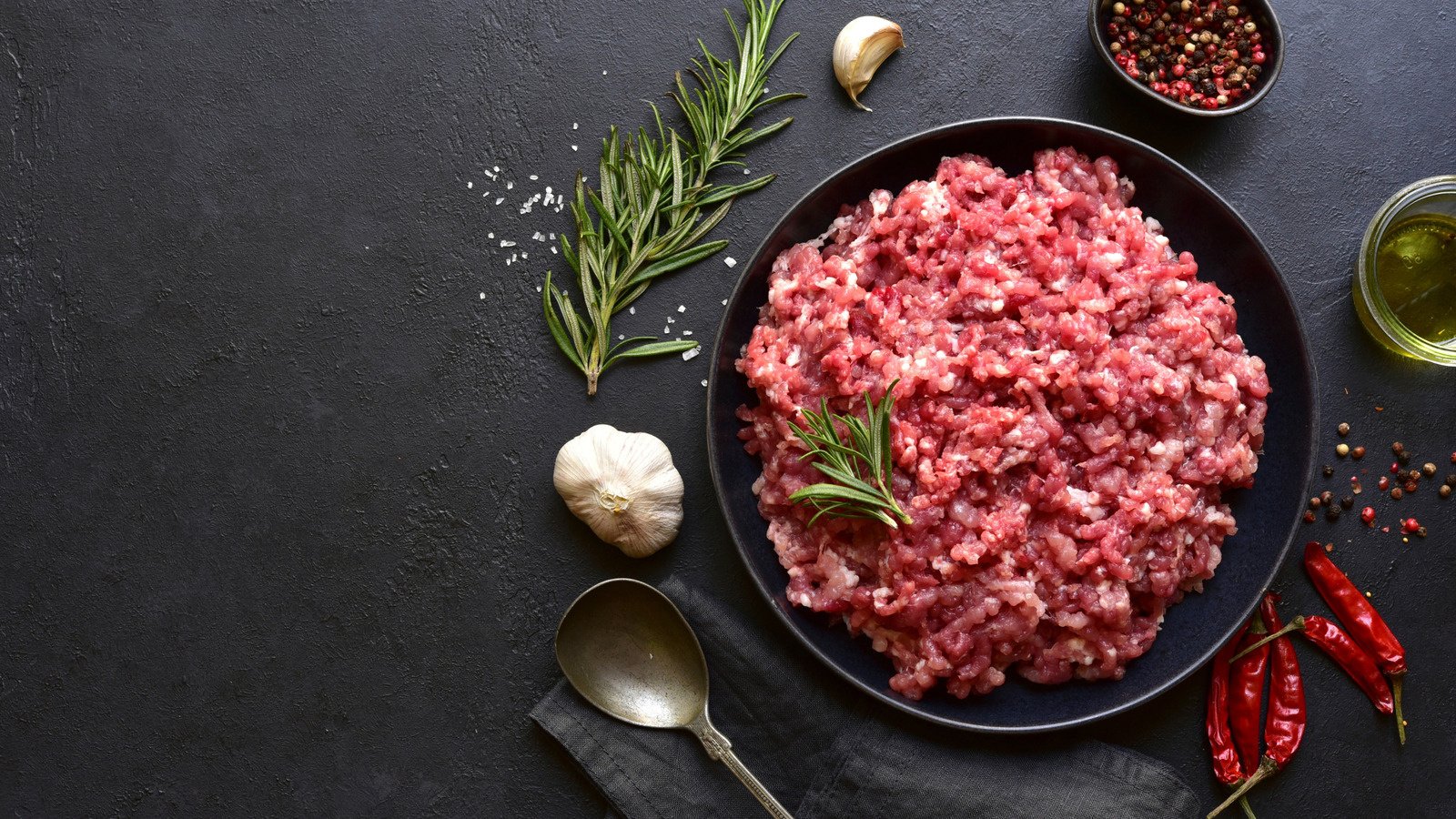When you see a bison burger or even a buffalo burger on a restaurant menu, you can’t help but think you’re in for something large, rich, and fatty. After all, bison, which are often mistakenly called buffalo in the United States, are the largest mammals in North America, standing up to six-feet tall and weighing up to 2,000 pounds (for a male). In reality, ground bison is leaner, has a sweeter flavor, and contains more nutrients than most types of ground beef.
You can see the differences between ground beef and ground bison the moment you look at the raw meat. Bison is generally a deeper red because it does not have the same level of marbling from fat found in beef. Although there is general consensus that bison is lower in total and saturated fat than beef, it’s difficult to say by how much, since the fat content depends on how the animals are fed and processed. USDA’s Agricultural Research Service (ARS) says that 100 grams of the lean portion of raw bison only has 109 calories and 1.8 grams fat compared to the lean portion of Choice-grade beef, which contains 291 calories, and 24 grams fat. Bison also contains more iron than beef.
Bison can be used in almost any beef recipe
Ground bison is a great alternative to ground beef and can be used interchangeably in recipes. If you’re making burgers, you can use the same 13 unexpected seasonings you’d use with beef, but also think about using it for stews, stuffed vegetables, meatballs, or any other recipes that you would use ground beef in.
Because bison is leaner, it works best with slower, wetter cooking methods, such as braises, slow cooking, and stews. It will also cook faster than beef, so you’ll need to cook it at a lower temperature –- up to 50 degrees Fahrenheit lower –- and lower the rack in your oven. Ground bison should be cooked to an internal temperature of 160 degrees Fahrenheit. To complement bison’s slightly sweet and sometimes gamey flavor, you can use garlic, rosemary, thyme, and other strong seasonings. Also, allow bison to rest after cooking so it retains its juices.
Ground bison is certainly pricier than ground beef, sometimes more than twice as much. However, it is difficult to make comparisons since it really depends on the type of beef you’re buying. It may be worth letting bison horn in on your beef recipes from time to time. If you’re already debating whether to use cheddar or American cheese on your burgers, you may soon start debating bison versus beef.





